(9 products available)



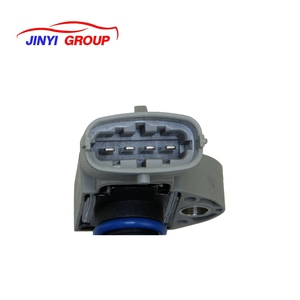





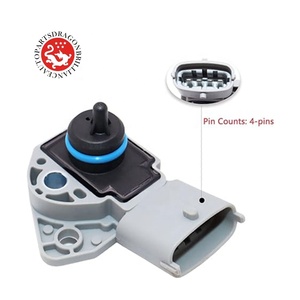


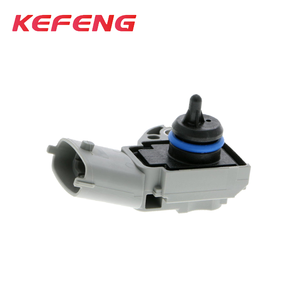




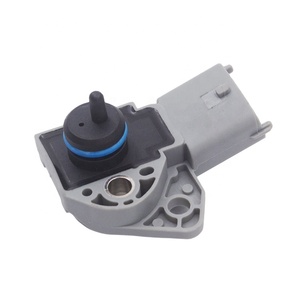


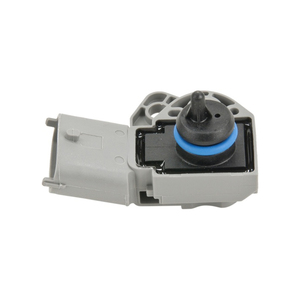

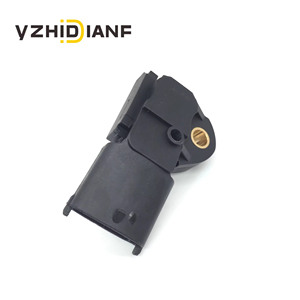














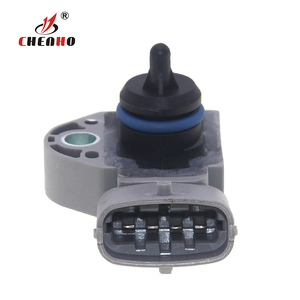
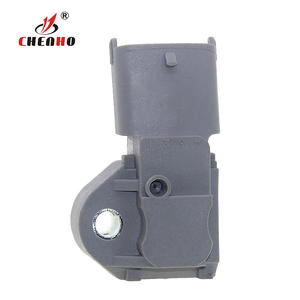
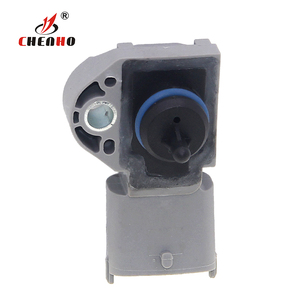




Fuel pressure sensors play an important role in maintaining the efficient operation of internal combustion engines. They monitor the pressure of fuel within the fuel rail and send signals to the engine control unit (ECU). This allows the ECU to adjust fuel delivery to optimize combustion and emissions. Various types of fuel pressure sensors exist, including:
Specification details of the 30756097 fuel pressure sensor give buyers information on what to expect as performance capability. Here are the specs:
Pressure Range
The pressure range of the 30756097 fuel pressure sensor is between 0 to 580 kPa, which is 0 to 84 PSI. It measures the fuel pressure within the common rail.
Accuracy
For this sensor, the total measurement accuracy is 0.5% of full scale. The pressure measurement accuracy is 0.5% of the measured value, and the temperature measurement accuracy is 1.0% of the measured value.
Electrical Characteristics
It has a supply voltage of 8 to 16V and a current consumption of less than 40mA. The output signal is a digital signal complying with the ISO 14230 KWP 2000 protocol. It also has an internal bus power supply.
Operating Conditions
The sensor operates in fuel (gasoline, diesel, biofuels), engine oil, engine cooling water, and air (atmospheric pressure) environments. The pressure it measures is that of the fuel and the gas (diesel) in the rail. It has a pressure measurement resolution of 0.1 kPa and a temperature measurement resolution of 1.0°C.
Physical Characteristics
The 30756097 fuel pressure sensor is a small and lightweight device. Its size is a maximum of 50 mm * 20 mm, and it weighs less than 50 g. The communication interfaces are CAN, SPI, and I2C. It has an internal bus power supply.
Mechanical Characteristics
It has a high mechanical shock resistance of 100 g and a vibration resistance of 20 g. The sensor's package must be protected against mechanical stress, moisture, dust, and chemical corrosion. It also has a pollution level of 3 and an expected service life of at least 10 million cycles.
These fuel pressure sensor specifications mean that the sensor can measure fuel pressure with high accuracy in different engine operating conditions. Its electrical characteristics ensure that it can communicate with the engine control unit (ECU) through a digital signal. The sensor's mechanical and environmental characteristics make it reliable for long service life in engine applications.
To keep the 30756097 fuel pressure sensors working well, they have to be maintained. Here are some of the maintenance requirements:
Ensuring cleanliness is a key part of maintaining fuel pressure sensors. Keeping them clean helps avoid contamination that can affect their performance and accuracy. Contaminants such as dirt, debris, and fuel impurities can enter the sensor and disrupt the pressure measurements. This can cause engine performance issues, increased emissions, and fuel efficiency losses. Therefore, take care to handle the sensors carefully during installation and avoid dropping them or exposing them to harsh environments.
Proper installation is crucial for maintaining the fuel pressure sensor. It ensures the sensor is securely mounted in its designated location within the engine or vehicle. This prevents sensor movement or displacement, which can lead to inaccurate pressure readings. Follow the manufacturer's instructions and use the appropriate mounting hardware to install the sensor correctly.
Regular inspection of the fuel pressure sensor is essential to ensure its continued accuracy and reliability. Periodic checks allow for early detection of potential issues or signs of wear and tear, enabling timely maintenance or replacement. Inspect the sensor housing, wiring connections, and mounting hardware for any signs of damage, looseness, or corrosion.
Maintaining electrical integrity is crucial for the proper functioning of the fuel pressure sensor and its communication with the engine control unit (ECU). Ensure that the wiring connections are secure and free from corrosion or damage. Loose or corroded connections can disrupt the sensor's signal transmission to the ECU, leading to inaccurate fuel pressure readings and potential engine performance issues.
Using high-quality fuel is essential for maintaining the fuel pressure sensor's performance and the entire fuel system's integrity. Low-quality fuels may contain impurities, contaminants, or additives that can affect the sensor's accuracy over time. These impurities can accumulate in the sensor and disrupt its pressure measurements, leading to potential engine performance issues.
To maintain the fuel pressure sensor's performance, have trained personnel maintain it using the right tools and knowledge. Professionals can check the sensor's performance, use special cleaning tools, and follow the manufacturer's guidelines to ensure correct installation and maintenance. They can also diagnose and fix fuel system problems.
Choosing the right fuel pressure sensor can be a daunting task, but it doesn't have to be. Here are some things to consider when choosing a fuel pressure sensor:
Firstly, consider the application. The intended use of the vehicle is the most important thing to consider. Is it a performance car, a daily driver, or a heavy-duty truck? Knowing this will help determine the sensor's specification needs. For example, performance vehicles need higher precision sensors to measure the pressure of fuel accurately, while daily drivers can use standard measurement sensors.
Secondly, consider the fuel type. One of the biggest differences between sensors is the fuel they are designed to work with. Gasoline sensors are the most common, but other sensors are designed for diesel or biofuel. Using the wrong sensor for the fuel type can lead to inaccurate readings and potentially damage the engine.
The measurement range is the next thing to consider. Different vehicles have different fuel systems that generate different pressure levels. Therefore, choosing a fuel pressure sensor with a measurement range that suits the vehicle's fuel system is important. A sensor with too high or too low of a measurement range will not provide accurate readings and can damage the sensor over time.
Another thing to consider is the connector type. Fuel pressure sensors use different connectors to interface with the vehicle's fuel system. It is important to choose a sensor with a connector that matches the vehicle's fuel system. Otherwise, an adapter will be needed, which can lead to inaccurate readings.
Finally, consider the brand. Choosing a reputable brand that offers a warranty and customer support is always a good idea. This ensures the sensor will last and function properly, and if there are any issues, the manufacturer will be there to help.
By considering these factors, choosing the right fuel pressure sensor for the needs will be easy. Take the time to choose the right one, and the vehicle will run smoothly and efficiently.
Replacing a fuel pressure sensor can be tricky. However, with the right tools and knowledge, it can be replaced in no time. Here are the steps
Find a good repair manual for the specific vehicle make and model. The manual will provide guidelines and steps to follow when replacing a fuel pressure sensor.
Run the vehicle and see if the check engine light is on. This will help determine if the fuel pressure sensor is bad. However, there are other issues that can make the check engine light go on.
Disconnect the negative battery cable before starting the work. Fuel pressure sensors have electrical connections and working on them with a connected battery can cause sparks.
Get the right tools needed to get the job done. The repair manual will provide information on the tools needed to get the job done.
Depending on the specific vehicle design, the sensor might be located on the fuel rail or on the gas tank. Accessing the sensor might require removing some engine components.
After locating the sensor, the next step will be to remove the electrical connector and the sensor itself. Once the old sensor is removed, the fuel rails may start leaking, so be prepared for that.
Now install the new sensor and ensure it is properly fitted. A loose sensor will cause more problems. Reconnect the electrical connection and double check to see if everything is in place.
Reconnect the negative battery cable and start the vehicle. Double check the sensor area to see if there are any leaks. If everything is perfect, the job is done.
It is advisable to take caution when replacing a fuel pressure sensor. If the job is complicated, consult a professional to avoid damaging the vehicle.
Q1: What is the fuel pressure sensor's job description?
A1: The fuel pressure sensor's job description is to monitor the fuel pressure in the fuel rail and send that information to the engine control unit so that it can adjust the fuel delivery according to the engine's needs.
Q2: Where is the fuel pressure sensor located?
A2: The fuel pressure sensor is located on the fuel rail, which is a metal pipe that delivers fuel to the injectors.
Q3: Can a car run without a fuel pressure sensor?
A3: No, a fuel pressure sensor is essential for the engine's optimal performance. Without it, the engine control unit cannot regulate fuel delivery, which can lead to performance issues.
Q4: How does one know if their fuel pressure sensor is bad?
A4: Symptoms of a faulty fuel pressure sensor include poor engine performance, especially under load, increased fuel consumption, and engine warning lights. A multimeter can be used to check the sensor's output against fuel pressure values if one is suspicious.
Q5: What can cause a fuel pressure sensor to fail?
A5: Contaminants in the fuel, excessive heat from the engine, and electrical issues can all lead to fuel pressure sensor failure over time.